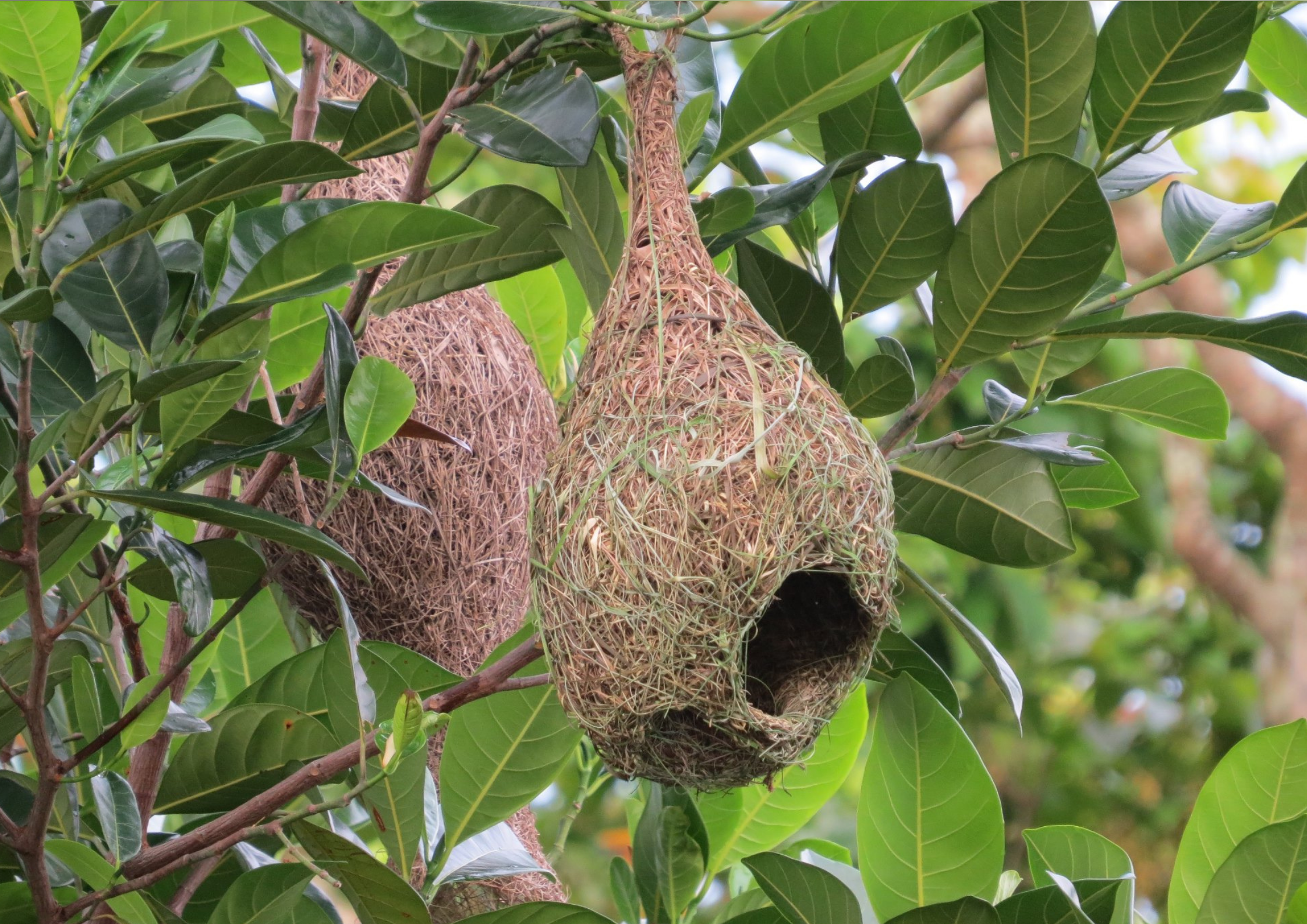The Weaverbird : A genius architect of Nature
Where do those yellow birds come from? The ones which make nests resembling upside-down flasks, with a bottom entrance? asked the cute little boy I had accompanied to Pointe aux Piments beach in Mauritius that bright Summer morning. I was delighted to be of guidance in his search for information on Nature ; I offered a few simple explanations which he was more than happy to receive.
Well, the ones that you see here in Mauritius are of the Passerine family. They are Cape Weavers endemic to South Africa. There are fifty-seven species in the world. They are equilibrists and architects at the same time and have mastered the art of tying over twelve knots to build their nests using only their beaks and feet. They always keep close to their nests and fetch their food in the surrounding areas. They rest during the hottest hours of the day.
In the afternoon, they gather in trees or bushes. You will be happy to learn that the males are the builders and use their elaborately constructed nests to attract prospective females. When the latter find the nests to their convenience, they take possession of them, lay eggs and wait until baby weavers hatch out of them. The males can however build more nests to lure in other ‘future mothers’ in the meantime.
‘Look around you’, I said to the little boy, ‘and you will see the male flying back and forth to carry green twigs, leaf fibers and fresh grass. Sometimes some nests remain uninhabited because they are not good enough for the females. Those end up drying out and becoming straw-colored. If winds are strong – which, fortunately, is not a usual occurrence in Mauritius – some also fall to the ground.
I picked up one of the nests as a demonstration. He stared fascinatedly at it and said, ‘There are so many weavers here and their chirping is so pleasant and melodious that I often feel like I am in a movie’.
‘I like these weavers, as you call them’, he added in his sweet little voice after a moment of reflection. ‘Let us feed them some bread crumbs, because they are so friendly. Maybe we can both tame these versatile genius weaverbirds.
One thing is for sure: we human beings will never be as skilled at weaving as they are. Their nests are true masterpieces that keep them safe from predators.
What a great idea it was to stop for a birdwatching session. The tall Date Palm tree whose pinnate leaves have been shredded to be used as a collective habitat by the weavers must be happy to have these colorful creatures around all the year through.
And that, little boy, is a true wonder of Nature.

Natur Lza





























